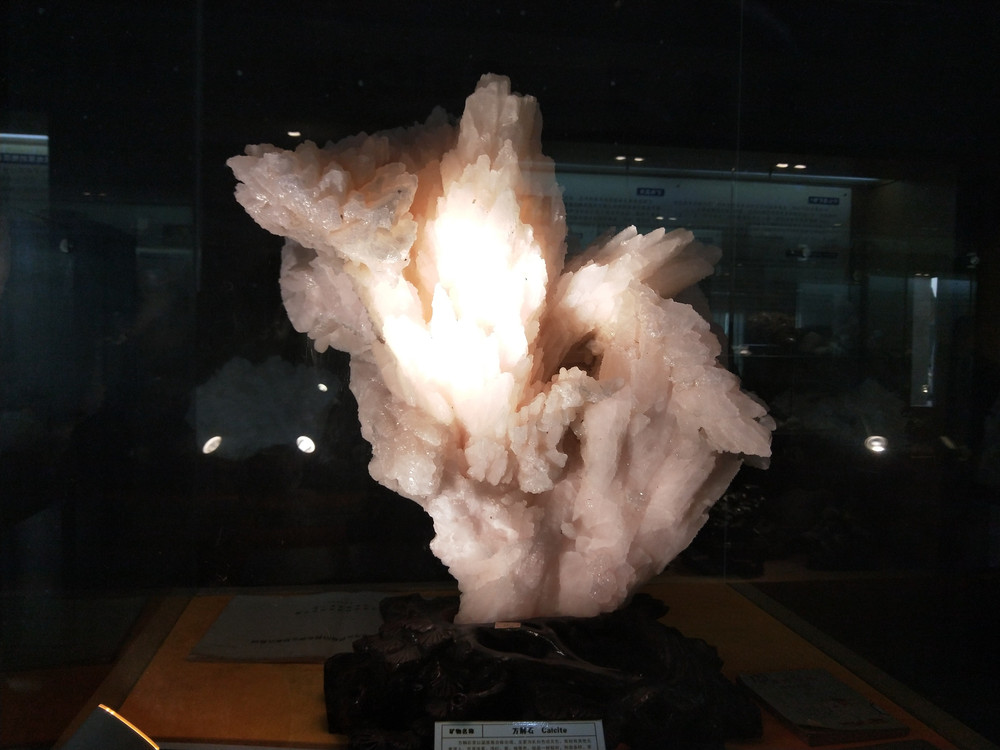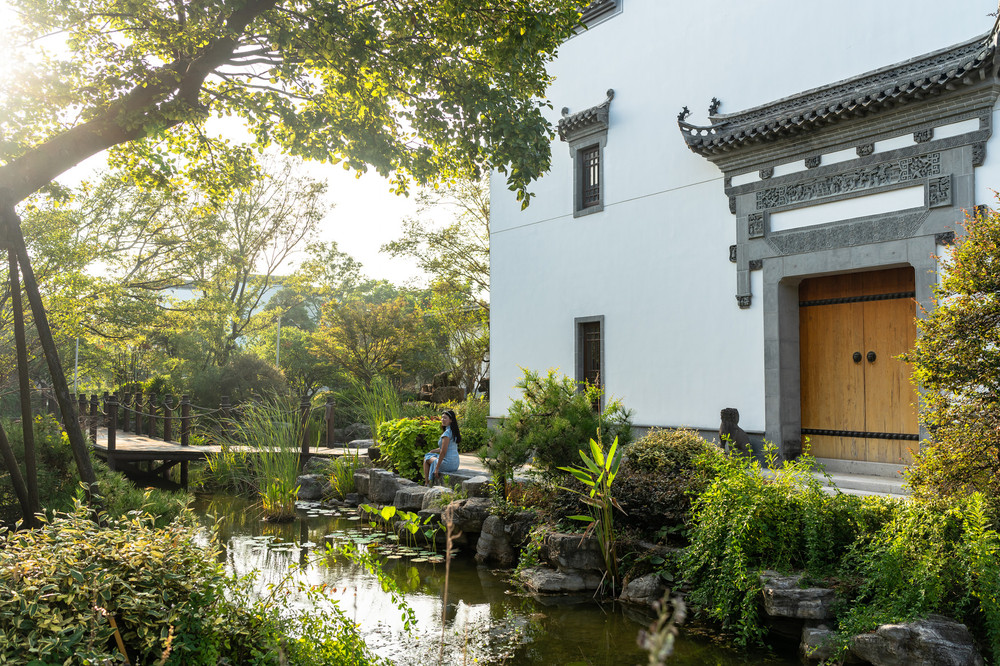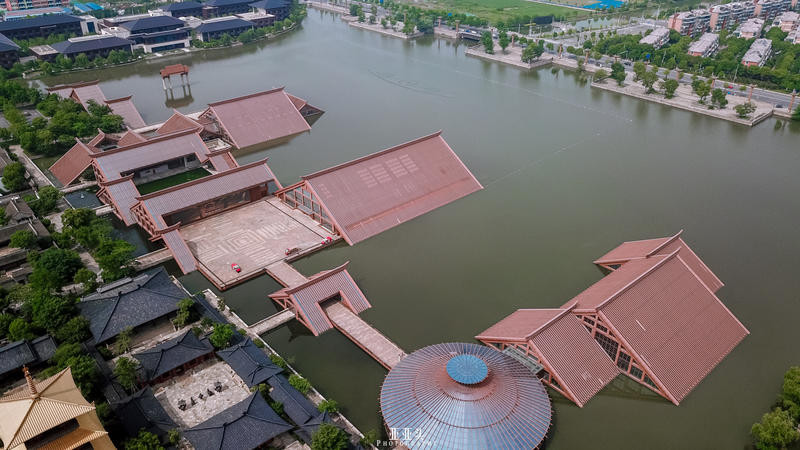Duration: 1 day
Time: January
Participants: Parent-child activities
Mode of travel: Self-driving, cultural exploration, free travel, hiking, budget travel, weekend trips
Published on 2022-04-08 23:17
Location: Shanghai Oriental Geological Science Museum

The Earth we inhabit has reached the age of 4.6 billion years. Throughout its long history, there have been half a billion species that have lived. However, due to significant changes in the geographical environment, there have been multiple major extinction events. With the extinction of old species, new ones emerged.
The lives of ancient creatures, after death and rapid burial underground, typically saw their soft tissue decay and vanish, while the hard parts underwent petrification to become fossilized remains. The original composition of these hard parts was also replaced by subsequent minerals, forming fossils of ancient organisms.
The Shanghai Oriental Geological Science Museum houses not only a variety of stones but also a vast collection of biological fossils. Some are familiar animals such as trilobites, ammonites, and crinoids. There are also more fossils left by creatures we have never heard of.
The bone-lip fish lived in the Eocene epoch, which translates to about 40 million years ago. It is a species of fish belonging to the bone-lip fish family within the true bone fish suborder, classified under the carp family. Its shape is spindle-like, indeed resembling today’s carps. The fossils are arranged in five rows and five columns in the display case, with only the last row missing one, totaling twenty-nine bone-lip fish fossils.The belief that this type of fish fossil is common is misleading; in reality, it is relatively rare. This misconception may stem from the rich resources housed in the Shanghai Oriental Geological Science Museum. Among these resources, the strange ring-footed shrimp stands out. This invertebrate dates back to the Late Jurassic to Early Cretaceous period and possesses several distinctive features. It has a large, cylindrical cephalothorax and a well-developed rostrum, with the first pair of legs resembling crab claws. The other two pairs of legs also bear pincers, setting it apart from modern shrimp. The fourth and fifth pairs of legs are claw-like, while the tail limbs are butterfly-shaped, somewhat reminiscent of today’s crayfish.
The Chinese dragon bird fossil, a replica due to the extreme rarity and preciousness of the original, is another fascinating specimen. Its name, containing both ‘dragon’ and ‘bird,’ has led to confusion over whether it is a dinosaur or a bird. This controversy sparked intense debate when the fossil was first discovered, with each side presenting compelling arguments. Eventually, scientific analysis revealed that the Chinese dragon bird is a small theropod dinosaur, specifically a type of Compsognathus. Reconstructions suggest that these creatures did not have wings and the feathers on their bodies are a subject of debate. Some believe they might be mere ‘decorations’ indicating gender, while others argue they could serve as insulation. If the latter is true, it would imply that small dinosaurs like the Chinese dragon bird could potentially be warm-blooded animals, and even homeothermic.
Lastly, the money group dragon shrimp is a creature I have never encountered before.According to the introduction, they lived from the Jurassic to the Paleocene, and their origin is Indonesia. The fossil appearance suggests they were a relatively small type of insect, possibly a planktonic organism.
The fossil of the Hezheng sheep is not complete, with the clearest part being its leg bone. This animal is a bovid discovered in the Hezheng area of Gansu, similar in size and physique to today’s sheep, but the skull structure, horn shape, and neck characteristics are closer to those of musk oxen. The musk ox currently only survives in Alaska, North America, and the discovery of the Hezheng sheep suggests that the musk ox likely originated in Asia before migrating to North America via the Bering Land Bridge.
The Gomphotherium, a prehistoric animal that lived over ten million years ago, is known for its large size, and its teeth are a testament to its status as one of the famous large land animals. The ancestors of today’s African and Asian elephants are the Gomphotherium. Due to climate change, grasslands replaced forests, leading to the extinction of the Gomphotherium. Its extinction is not as widely debated as that of dinosaurs, which still remain in the realm of speculation. The gomphothere lived in Asia and Africa between 12 and 1 million years ago, with longer legs and larger teeth compared to modern elephants. Their tusks resemble two large halberds, and it is said that some gomphotheres had tusks with a significant curve at the tip, similar to the mammoth.
The Nanxiong turtle fossil, consisting only of the carapace, features a massive body size, and its most distinctive feature is the reticulated pattern on the bone plates.The Nanxiong turtle lived during the Cretaceous period and was named because it was unearthed in Nanxiong. The petroleum Malay crocodile lived in the late Eocene and was found in the Maoming oil pit layer in Guangdong, China. Its skin pattern is similar to that of modern crocodiles. The shieldless Maoming turtle, also discovered in the Maoming area, is smaller in size and lived in the middle to late Eocene, with a high central隆起 of its carapace. The Guizhou dragon, found in Guizhou, China, has a shape that bears some resemblance to the ‘dragon’ in Chinese legends, with a slender body, four limbs, and a tail. It was initially called a ‘four-legged snake’ and is not capable of flying, being a reptile. The Triassic crab, originating from Argentina, lived in the Miocene epoch, with a nearly hexagonal carapace, robust claws of different sizes, strong walking legs, and a thin, flattened fifth appendage, which appears to be specialized for swimming. The museum also houses a large collection of fish and plant fossils, most of which are common types. The most beautiful in shape is the sea lily, a fossil often displayed in many museums.









